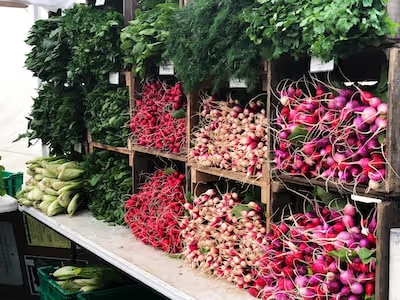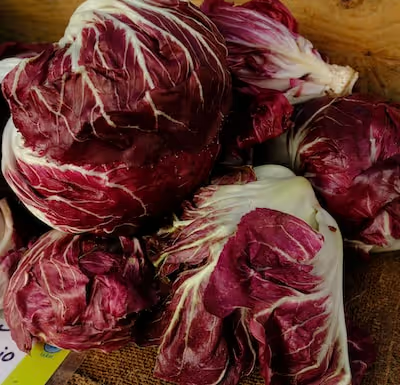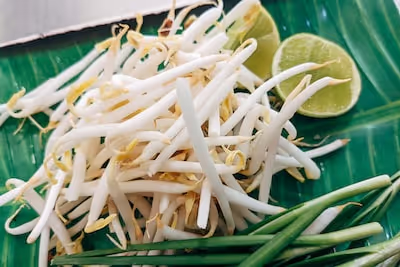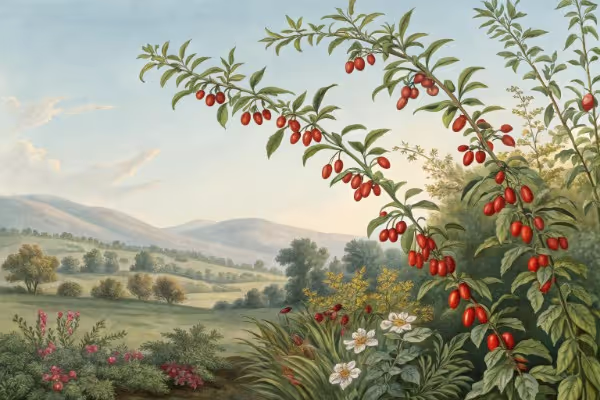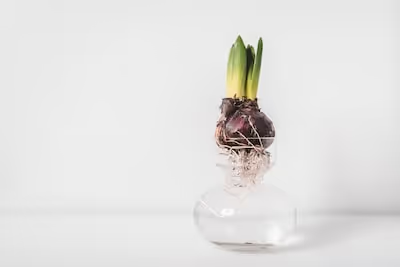Growing Eddoe: How to Plant, Care For, and Harvest at Home
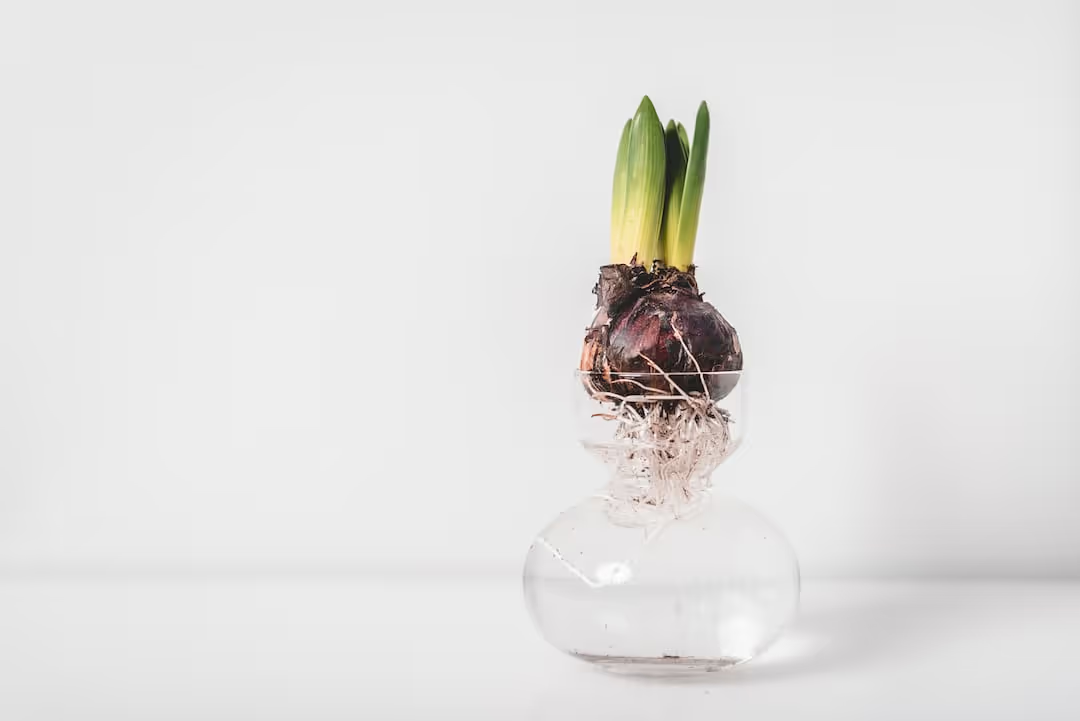
Growing Eddoe
Growing eddoe rewards gardeners with hearty, nutty tubers prized in Caribbean and Asian kitchens. Simple to plant, thriving in moist, fertile soils, eddoe suits gardeners craving something beyond the typical potato crop. This guide takes the guesswork out of growing eddoe, from selecting the perfect planting spot to harvesting tasty, versatile roots—keep reading to cultivate confidently and savor your own backyard bounty.
Cheatsheet: Eddoe Planting & Harvest Guide
🌱 Choose Eddoe Corms
Buy disease-free corms from a reputable supplier. Pick firm, unblemished pieces, 1–2 inches (2.5–5 cm) across.
🛠️ Tools and Products You’ll Need
- Healthy eddoe corms
- Spade or trowel
- Compost or aged manure
- Mulch (straw/leaves)
- Watering can or hose
- Gloves
☀️ Planting
- Plant after frost risk. Soil: loose, rich, pH 5.5–7.0. Temp: 70–85°F (21–29°C).
- Dig holes 4 in (10 cm) deep, 18 in (45 cm) apart.
- Place corms sprout-up. Cover lightly. Water well.
💧 Water & Feed
- Keep soil consistently moist, never soggy.
- Top-dress monthly with compost or fish emulsion.
- Mulch thickly to conserve moisture.
🍃 Care & Maintenance
- Weed regularly, avoid disturbing shallow roots.
- Watch for aphids/snails; hand-pick or use neem oil if needed.
- Protect from frost (row cover, straw mulch).
🔪 Harvest & Storage
- Harvest corms 8–12 months after planting, when leaves yellow.
- Gently dig up; cure in shade 7–10 days.
- Store at 50–60°F (10–15°C) in dry, dark spot—lasts up to 6 months.
🥗 Nutrition & Self-Sufficiency
Eddoe delivers fiber, potassium, and vitamin C. Grows well in small backyard plots—one plant feeds a household.
-
Growing Eddoe: How to Plant, Care For, and Harvest at Home
I grow Colocasia esculenta var. antiquorum for its nutty, chestnut-like cormels that braise into velvet. Growing Eddoe fits small gardens and containers better than paddy taro, and it plays nicely with heat, humidity, and steady water.
Eddoe is an upland taro type that favors moist, well-drained soil over standing water. It thrives in long, warm seasons and sulks in cold snaps.
Climate, light, and soil
Plant after nights stay above 60 F 16 C and soil holds at 65 to 70 F 18 to 21 C. I get best yields in full sun with afternoon shade in scorching summers.
Target a pH of 5.5 to 6.5 and soil rich in organic matter. Sandy loams with compost drain quickly yet hold moisture, which eddoe craves.
Planting calendar and spacing
In frost-free zones 9 to 11, set pieces in spring and harvest by late fall. In cooler zones, pre-sprout indoors 4 to 6 weeks early and transplant after frost risk passes.
Use seed cormels or chunks 2 to 3 ounces 55 to 85 g with one firm bud. Space 18 to 24 inches 45 to 60 cm apart, rows 30 to 36 inches 75 to 90 cm, at 2 to 4 inches 5 to 10 cm deep.
Seed prep I trust
I pre-sprout in a warm tray at 75 to 85 F 24 to 29 C with barely moist peat, eyes facing up. Pieces push nubs within 10 to 14 days, which jump-starts the bed.
Dip cut faces in wood ash or cinnamon to dry overnight if you’re cutting larger corms. Plant as soon as callus forms.
Containers that actually work
Use a 15 to 25 gallon 57 to 95 liter pot per plant with drainage. Blend 60 percent quality compost, 30 percent coconut coir, and 10 percent perlite, then mulch heavily.
Keep the pot on a saucer and bottom-water to maintain even moisture. Eddoe in a thirsty container repays you with small, creamy cormels on schedule.
Water and mulch
Keep soil consistently moist with 1 to 1.5 inches 25 to 38 mm of water per week, more during dry spells. Mulch 2 to 3 inches 5 to 8 cm thick to cool soil and reduce weeds.
Drip lines with 0.5 gph emitters keep foliage dry and roots happy. I run short daily pulses in heat waves, then lengthen intervals as the canopy closes.
Feeding for yield
Before planting, work in 2 to 3 inches 5 to 8 cm of finished compost. Side-dress at 30, 60, and 90 days with a balanced fertilizer such as 5-10-10 at 0.5 cup per plant each time.
Eddoe is potassium hungry near bulking, so I add sulfate of potash late season. Overdoing nitrogen makes huge leaves and stingy cormels.
Companions and rotation
I tuck eddoe between okra or peppers that cast light shade by August. Avoid following solanums or other nematode-prone crops for at least two years.
A rye or sunn hemp cover crop ahead of eddoe suppresses weeds and improves tilth. Clean rotation pays dividends with cleaner skins and fewer rots.
Safe handling
Wear gloves when peeling or cutting raw eddoe to avoid irritation from calcium oxalate crystals. Never eat it raw, and cook leaves and corms thoroughly.
“All parts of taro contain calcium oxalate crystals and must be cooked thoroughly before eating.” — University of Hawai‘i, CTAHR
Growing Eddoe vs its lookalikes
- Eddoe vs dasheen taro: eddoe forms many small cormels in upland soil, while dasheen favors a single large corm and wetter beds.
- Eddoe vs tannia Xanthosoma: tannia leaf lobes point forward and flavor leans earthier, while eddoe leaf lobes point back and texture cooks creamier.
- Eddoe in containers: reliable and tidy, unlike paddy taro that begs for soggy conditions.
Pest and disease playbook
Scout weekly for aphids, spider mites, and leafhoppers on undersides of leaves. Knock them back with insecticidal soap or horticultural oil in the cool of day.
Root-knot nematodes cause galls and stunting, so use clean planting stock, solarize beds in peak summer, and rotate with grasses. Slugs love the mulch, so set beer traps and hand-pick at dusk.
Leaf spots and taro leaf blight flare in tight, wet canopies. Improve airflow, water at soil level, remove spotted leaves, and consider copper sprays where allowed.
Soft rots Pythium thrive in soggy clay. Raise beds, amend heavily, and resist the urge to overwater in cool weather.
Signs you nailed the care
Leaves reach 2 to 3 feet 60 to 90 cm tall with a broad, healthy sheen. New pups pop around the base by midseason, which signals future cormels.
If petioles snap easily, you are underfeeding potassium. If leaves stretch thin and pale, you are short on nitrogen or light.
Harvest timing and technique
Eddoe matures in 7 to 9 months depending on heat and fertility. I start probing at 180 days by gently pulling soil back to inspect cormel size.
Once lower leaves yellow and cormels feel plump, cut foliage to 4 inches 10 cm and wait a week to firm skins. Lift with a garden fork, not a shovel, and pry from the side.
Curing and storage
Brush off soil, do not wash, and cure 3 to 5 days in warm shade with airflow. Store at 54 to 60 F 12 to 16 C and 85 to 95 percent humidity for several weeks.
Refrigerators run too cold and cause chilling injury. I keep mine in slatted crates in a cool pantry with a damp towel nearby for humidity.
Kitchen notes from the patch
Peeled cormels simmer to silky in 20 to 30 minutes and take spice like potatoes wish they could. Leaves make a lush pot of callaloo after a good blanch and long braise.
A quick scrape under running water keeps my hands happy. A splash of vinegar in the cooking water keeps color bright.
Smart buying guide for Growing Eddoe
- Planting stock: choose firm, blemish-free cormels with visible eyes; ask vendors for eddoe types, not dasheen.
- Soil tests: a simple pH and NPK kit steers your fertilizer dollar and prevents guesswork.
- Fertilizer: balanced granular for early growth, sulfate of potash for bulking, and a chelated micronutrient if leaves pale between veins.
- Watering: low-flow drip kits with pressure regulators keep moisture steady and disease lower.
- Mulch: coarse arborist chips or shredded leaves hold moisture longer than straw in hot climates.
Top rookie mistakes to skip
- Planting in cold soil, which stalls sprouts and invites rot.
- Watering overhead at night, which guarantees leaf disease.
- Overfeeding nitrogen late season, which grows sails instead of starch.
- Storing in the fridge, which piths the flesh and tanks flavor.
Quick-reference for Growing Eddoe
- Soil temp: 65 to 70 F 18 to 21 C for planting.
- Spacing: 18 to 24 in 45 to 60 cm in-row, 30 to 36 in 75 to 90 cm between rows.
- Water: 1 to 1.5 in 25 to 38 mm weekly, more in heat.
- pH: 5.5 to 6.5.
- Days to harvest: 210 to 270 in mild climates, shorter with strong heat and fertility.
Yield expectations
In rich, warm soil I pull 2.5 to 5 pounds 1.1 to 2.3 kg of cormels per plant. Containers average closer to 1.5 to 3 pounds 0.7 to 1.4 kg, which still cooks for a crowd.
Cull any damaged pieces and cook them first. The rest keep nicely if cured well.
Evidence and field notes
Extension bulletins from University of Florida IFAS and CTAHR match what I see in humid summers: eddoe wants heat, potassium, and steady water. Those same guides flag nematodes and blights as the usual spoilers in poorly rotated beds.
FAOSTAT reports global taro output topping 10 million tonnes annually, with West African nations among the leaders in production.
That scale hints at how reliable this crop can be under the right management. It also explains the dizzying range of culinary traditions that prize it.
My field-tested shortcuts
Start in slightly raised beds to dodge spring chill and early rot. Edge with basil or mint as living scent screens, which seem to distract aphids long enough for lady beetles to move in.
Toe in a handful of biochar at planting for better moisture buffering. It makes a noticeable difference in sandy soils that dry fast.
FAQs I get about Growing Eddoe
Can I start from grocery eddoes. Yes, but disease risk exists, so quarantine and sprout in a separate tray first.
Can I grow in partial shade. Yes, aim for 5 to 6 hours of direct light and bump potassium for better bulking.
Do I need flooding. No, eddoe is an upland type that prefers moist, well-drained soil.
Sourcing and cultivar notes
Suppliers often list eddoe simply as eddoe, taro eddoe, or cocoyam rather than by cultivar. Ask for upland types with small cormels and good dry matter if you plan to fry or roast.
For poi or paste, seek starchier types and grow longer before harvest. Texture and flavor swing more with soil, heat, and water than with labels on a bag.
Frequently Asked Questions about Growing Eddoe
What kind of soil encourages vigorous growth for eddoe plants?
Eddoe plants thrive best in fertile, well-draining soil with a slightly acidic to neutral pH range of 5.5 to 7.0. Enrich your growing space by mixing in organic compost or aged manure to promote steady growth and enhance root formation.
How frequently should I water my eddoe plants?
Eddoe requires regular watering to sustain steady moisture without causing saturation. Aim for about 1 inch (2.5 cm) of water per week, depending on weather conditions. Monitor soil moisture by gently checking the top inch (2.5 cm)—water when the surface feels slightly dry.
At what temperature range do eddoe plants flourish best?
Eddoe plants perform optimally at temperatures between 68°F to 86°F (20°C to 30°C). Keep eddoe away from prolonged exposure to temperatures below 50°F (10°C), as cool conditions may stall growth or cause harm to the plants.
Can I successfully grow eddoe in containers?
Yes, container cultivation suits eddoe plants effectively. Select a container at least 12 inches (30 cm) deep and wide with excellent drainage holes. Utilize a rich potting mix, monitor moisture carefully, and apply regular feeding to encourage healthy root development.
What pests or diseases commonly affect eddoe, and how can I control them?
Common pests include aphids, spider mites, and leafhoppers, while fungal diseases such as leaf blight may occasionally appear. Practice crop rotation, maintain proper plant spacing, remove affected foliage promptly, and apply insecticidal soap or fungicides as needed to maintain optimum plant health.
How long does it typically take for eddoe plants to reach maturity and produce edible tubers?
Eddoe plants typically reach maturity within 6 to 8 months, depending on climate and growing conditions. Harvesting usually commences once the foliage yellows and begins to wilt, indicating the underground tubers are ready for collection.
What fertilizing methods and nutrients best support healthy eddoe plant growth?
Regular feeding supports strong eddoe growth. Incorporate balanced fertilizer or organic supplements high in potassium and phosphorus. Apply fertilizers every 4–6 weeks during the plant's growing season for sustained productivity and vigorous root development.
Growing eddoe rewards patience and a taste for the unusual. Give these knobby corms rich soil, steady moisture, and room to sprawl, and you’ll wind up with a harvest that stands out in any home kitchen. Rotate your crops, mulch well, and keep an eye out for pests. When the leaves fade, it’s time to dig—handle your haul with care and let them cure for longer storage. This isn’t fast food; it’s a slow, earthy reminder that some flavors are worth waiting for. If you’re hooked on growing unique roots, you might also enjoy learning how to grow burdock root or duck potato. With eddoe, you’re cultivating more than a crop—you’re adding depth, grit, and a little mystery to your garden.
The Homesteader's Take: Eddoe as a Sustainable Staple
Sustainable Crop Integration
- Short Growing Cycle: Harvest eddoes in 6-8 months; fast turnover boosts annual yield.
- Minimal Nutrient Demands: Requires limited fertilizer; compost amendments suffice.
- Low Irrigation Needs: Prefers moist soil but tolerates dry spells, ideal for homestead setups.
Space-Saving Cultivation Methods
- Vertical Container Farming: Utilize stacked container gardening; plant spacing of 12 inches (30 cm) optimizes growth.
- Intercropping Potential: Pair eddoes with legumes or leafy greens; efficient garden space management with mutual pest deterrence.
Self-Sufficiency Benefits
- Reliable Yield: Average 8-10 tubers per plant, approximately 4-6 lbs (1.8-2.7 kg) harvest per planting, ideal for family food provision.
- Nutrient-Rich Harvest: High in dietary fiber, potassium, vitamin E; valuable addition to balanced, self-reliant diets.
- Long Storage Life: Cure properly for 7-10 days at 60°F-70°F (15°C-21°C), then store at 50°F-55°F (10°C-13°C) with 70% humidity; eddoes remain viable up to 6 months.
Waste-Free Harvest Utilization
- Edible Leaves and Shoots: Steam or sauté young foliage for nutritious meals, enhancing harvest yield.
- Animal Feed Utility: Excess, damaged, or undersized tubers effectively feed chickens and pigs, reducing external feed costs.
- Compost Nutrients: Efficient composting of leaves and stalks boosts garden fertility for future crop cycles.
Find out which plants will thrive in your garden!
Answer a few fun questions and get custom plant recommendations perfect for your space. Let’s grow something amazing together!

start your season

